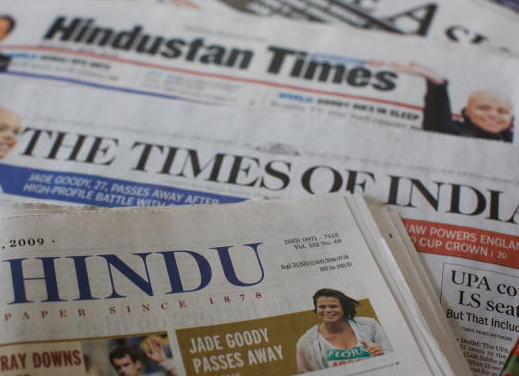สรุปข่าวเศรษฐกิจอินเดียประจำวันที่ 30 กันยายน 2556

Finance ministry estimates put current account deficit for current year at just 2.6% of GDP
Predictions of a balance of payments crisis in India similar to the one in 1991 may have been exaggerated. Based on the latest data, the finance ministry expects the current account deficit for the current year at 2.6% of GDP or $48.2 billion, much below its August estimate of $70 billion or 3.7% of GDP and a big improvement over the record 4.8% posted last fiscal. Finance minister P Chidambaram should not only be able to fund this deficit, as he has been repeatedly promising, but also add $20 billion to the foreign exchange kitty in the fiscal."The numbers are looking much better now," said a senior government official aware of the latest current account deficit projections. Some private estimates have also pointed to a dramatic improvement in this measure of the economy's external health. A rapid slide in the rupee to an all-time low of 68.81 to the dollar at the end of August had raised concerns over a ballooning current account deficit.A Credit Suise note pegs the 2013-14 current account deficit even lower than the ministry estimates, assuming better inflow from invisibles, including IT exports.
(Source: Economic Times)
Government to kick-start its disinvestment programme in first week of October
The government will kick-start its stuttering disinvestment programme in the first week of October but it is likely to scale back the target for the current fiscal The finance ministry, in consultation with its disinvestment department, is likely to scale back of the disinvestment target by 10,000 crore to 30,000 crore, the official said. The government also plans to launch public issues of Power Grid Corporation and Coal India Limited by December or January, the official said. The government had put on hold its disinvestment programme because of the weakening rupee and the impending tapering of the quantitative easing (QE) programme by the US Federal Reserve. The rupee has recovered in the past few weeks following a spate of measures taken by the government and the Reserve Bank of India.
(Source: Economic Times)
Gods forbid: Temples guarding their gold from government
India's Hindu temples are resisting divulging their gold holdings and amid mistrust of the motives of authorities who are trying to cut a hefty import bill that is hurting the economy. The central bank, which has already taken steps that have slowed to a trickle the incoming supplies that have exacerbated India's current account deficit, has sent letters to some of the country's richest temples asking for details of their gold. Indians buy as much as 2.3 tonnes of gold, on average, every day - the weight of a small elephant - and what they don't give to the gods is mostly hoarded. Jewellery is handed down as heirlooms and stored away with bars and coins as a hedge against inflation or a source of quick funds in an emergency.That is costing the economy dear. Gold imports totalled $54 billion in the year ending March 31, 2013, the biggest non-essential item shipped in from overseas and a major factor in swelling the current account deficit to a record in 2012/13.
(Source: Indian Express)
Uttar Pradesh ranks highest in new investments in real estate sector
Akhilesh Yadav ruled Uttar Pradesh has been ranked top with maximum share of about 40 per cent in the new investments attracted by real estate sector among top 20 states across the country during the first quarter of current fiscal, industry body ASSOCHAM said today.Interestingly, the total new investments in real estate sector across the country had dipped by over 50 per cent during the course of past one year. India's construction sector comprising of townships, housing, built-up infrastructure and construction development projects has attracted a cumulative foreign direct investment (FDI) of over USD 22 billion during April 2000-June 2013, highlighted the ASSOCHAM paper. Maharashtra alone accounts for highest share of about 20 per cent, It is followed by Gujarat (15 per cent), Haryana (12 per cent), Karnataka (12 per cent), Uttar Pradesh (10 per cent) and Andhra Pradesh (10 per cent). Followed by UP, the state of Maharashtra has acquired second highest share of 17 per cent in attracting new investments in realty sector in Q1 of FY 13-14 followed by Tamil Nadu (17 per cent), Uttarakhand (nine per cent) and Karnataka (six per cent) that are amid top five states in this regard.
(Source: Financial Express)
Economic Section
Royal Thai Embassy














